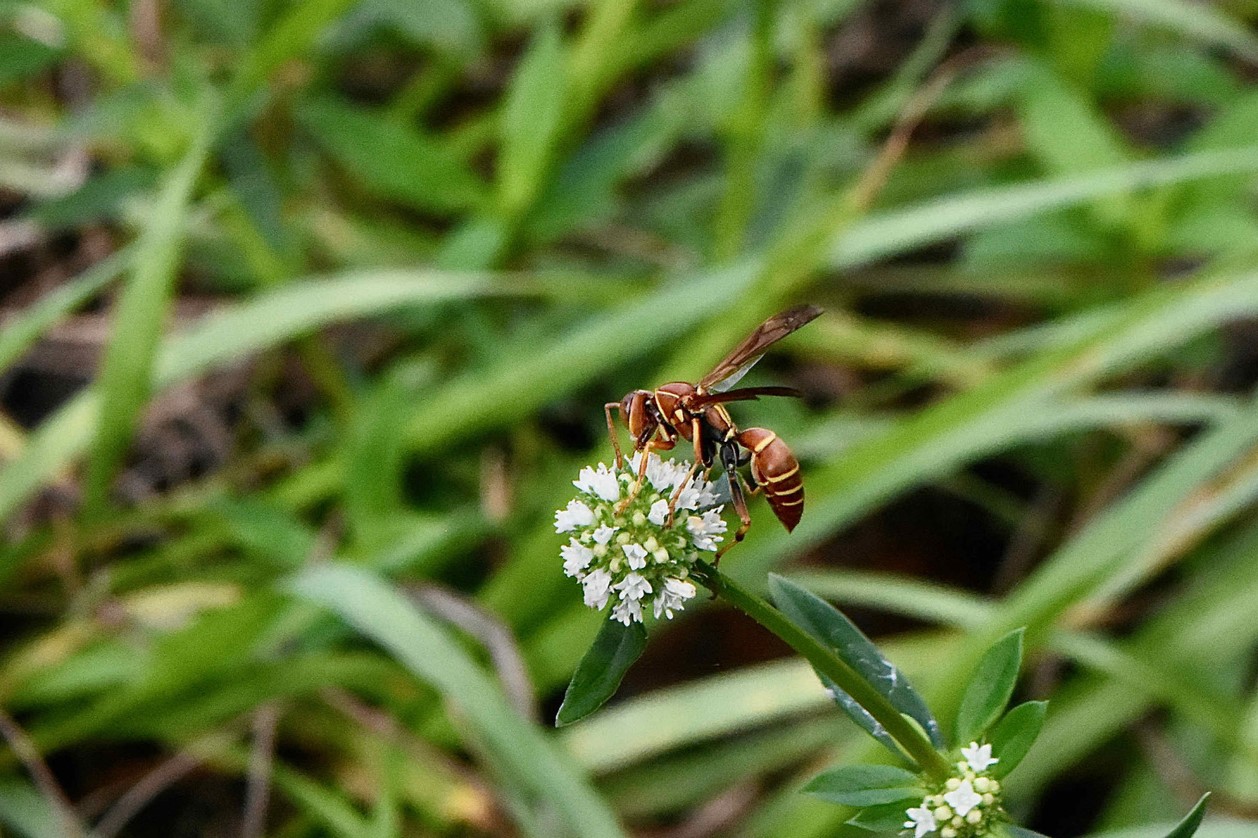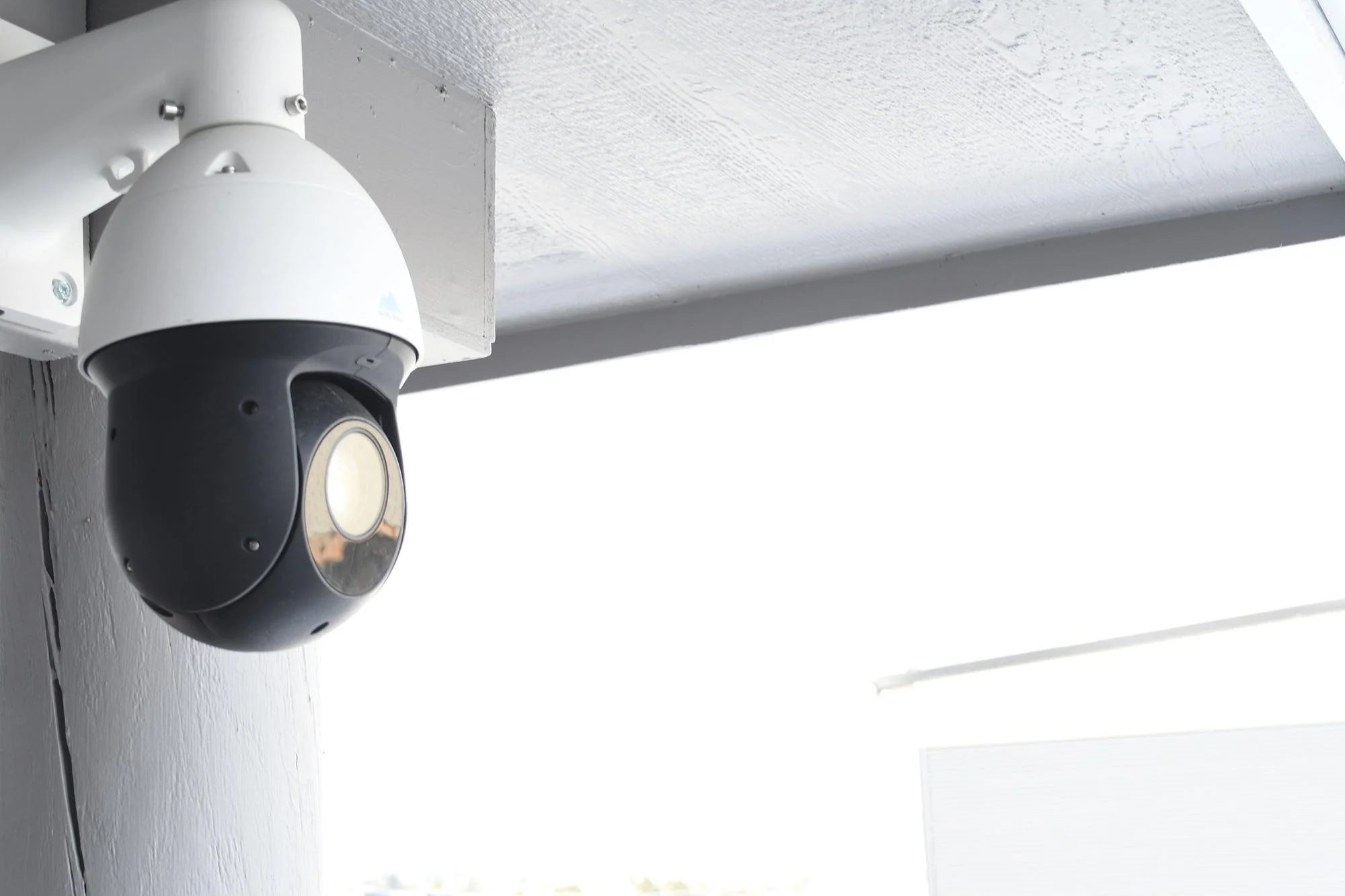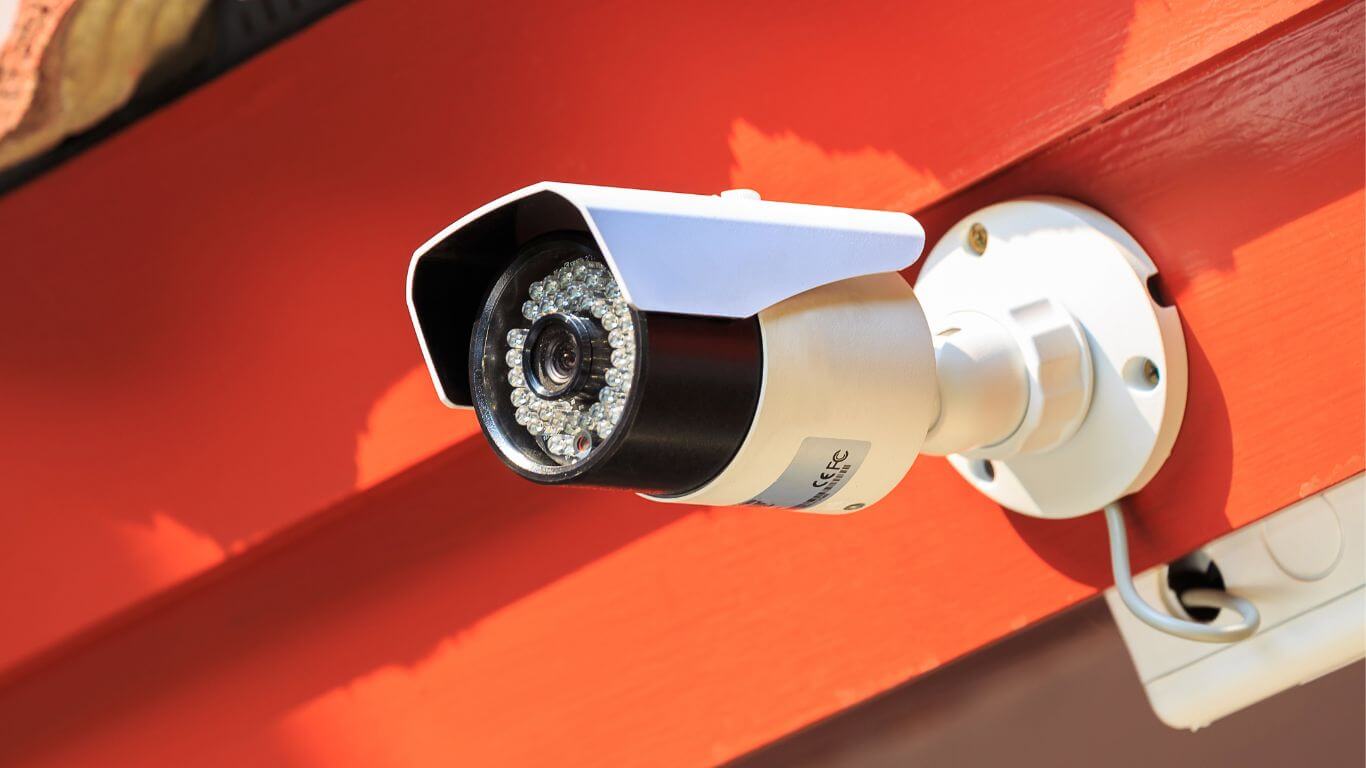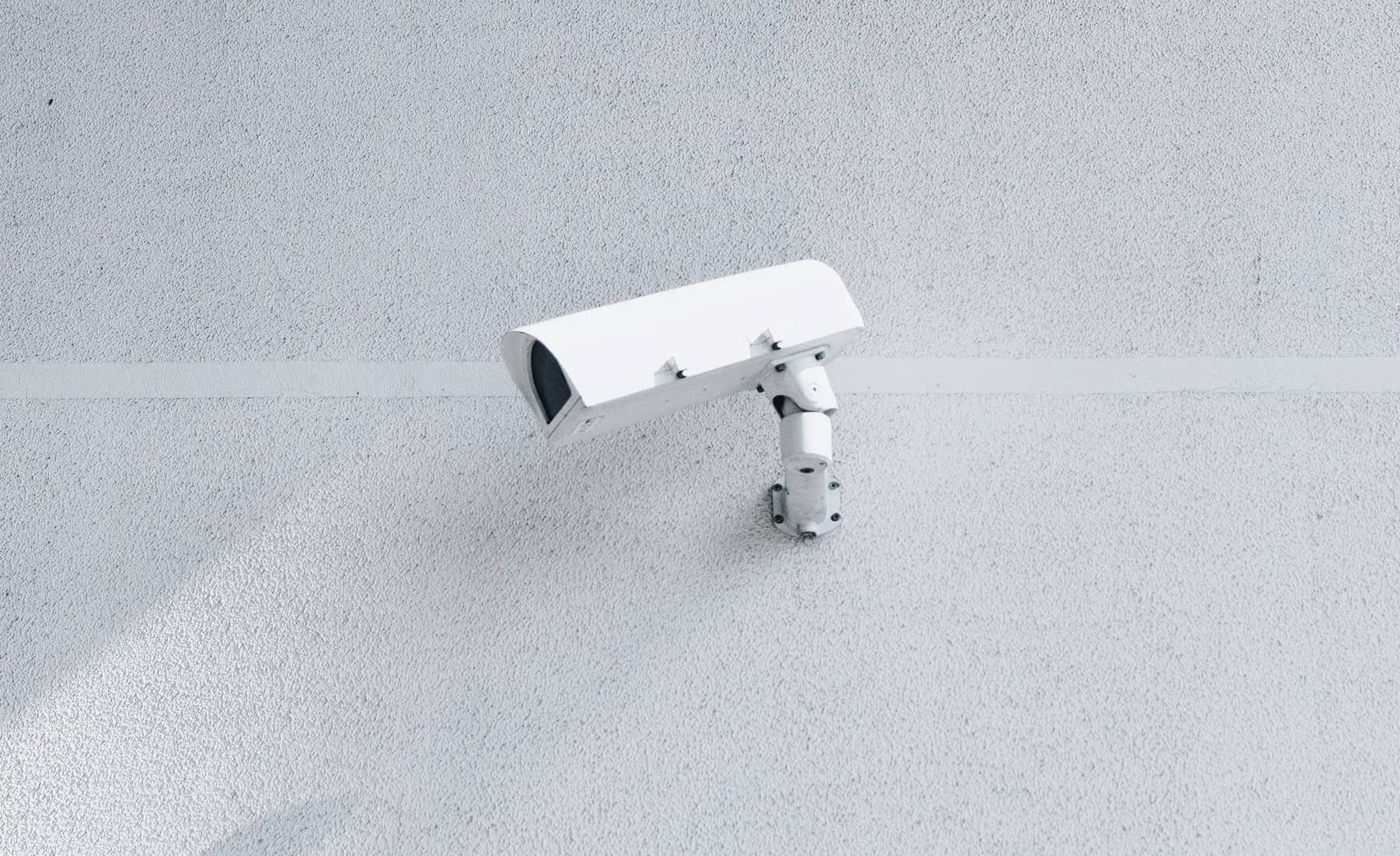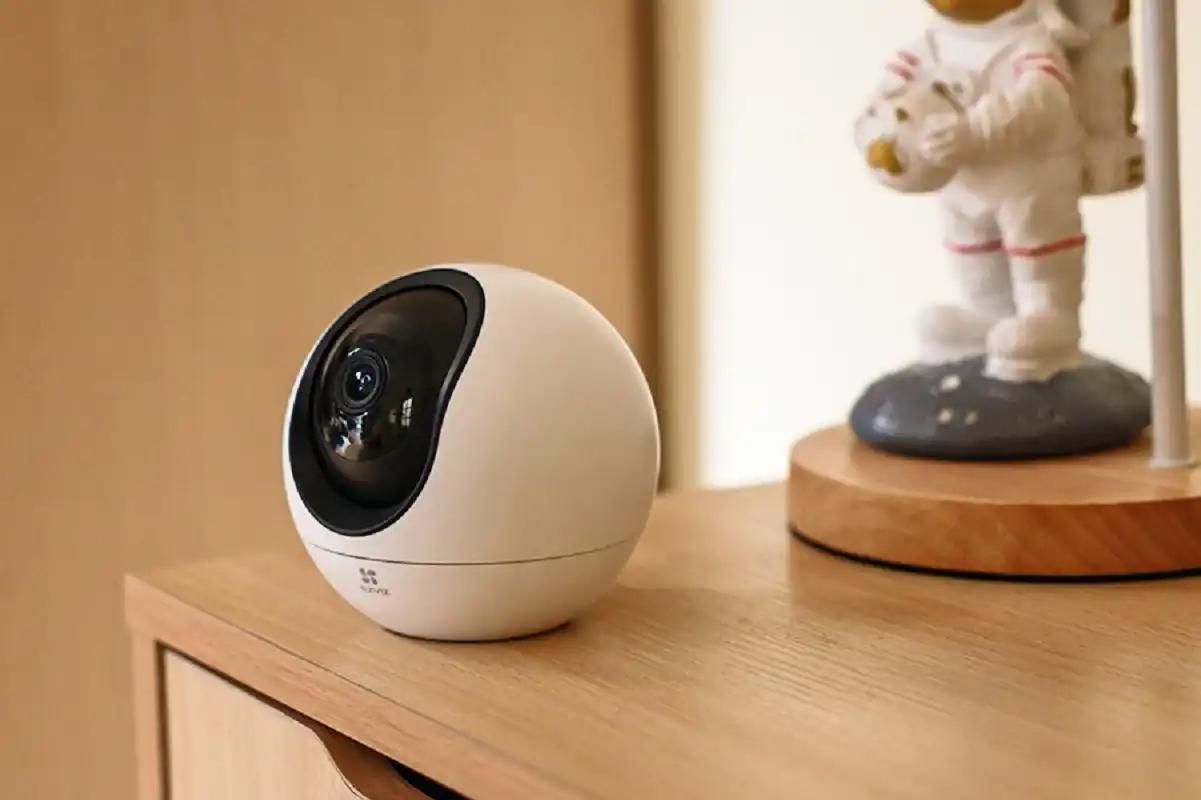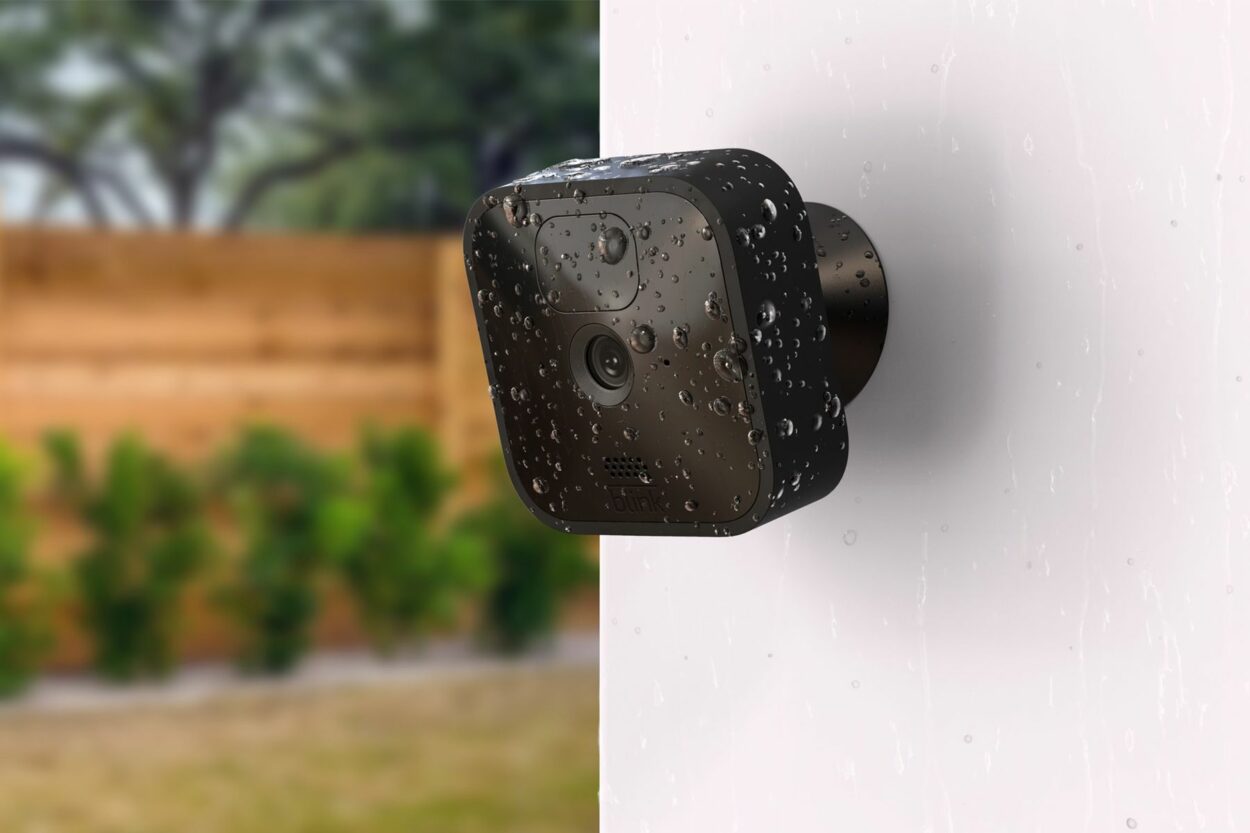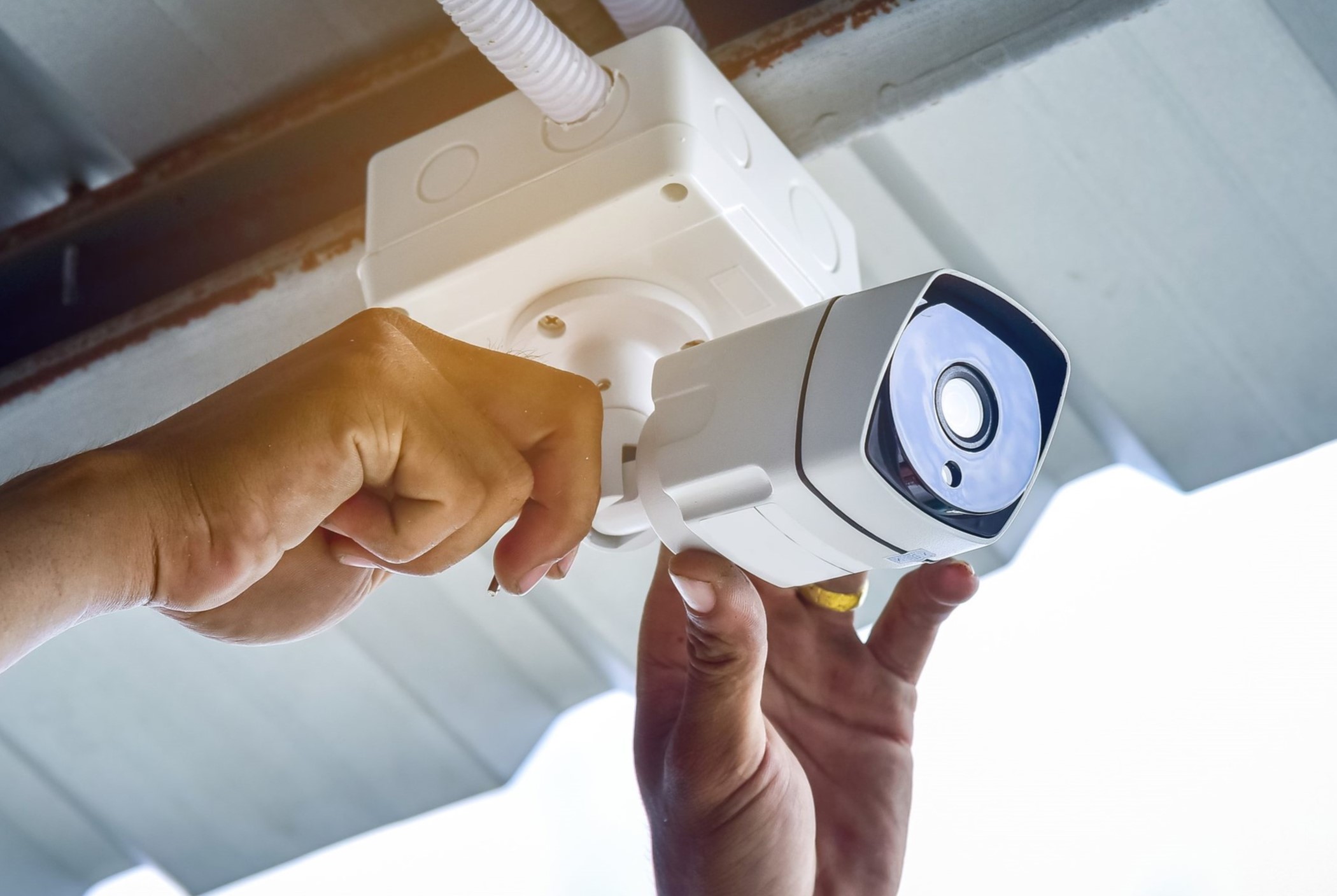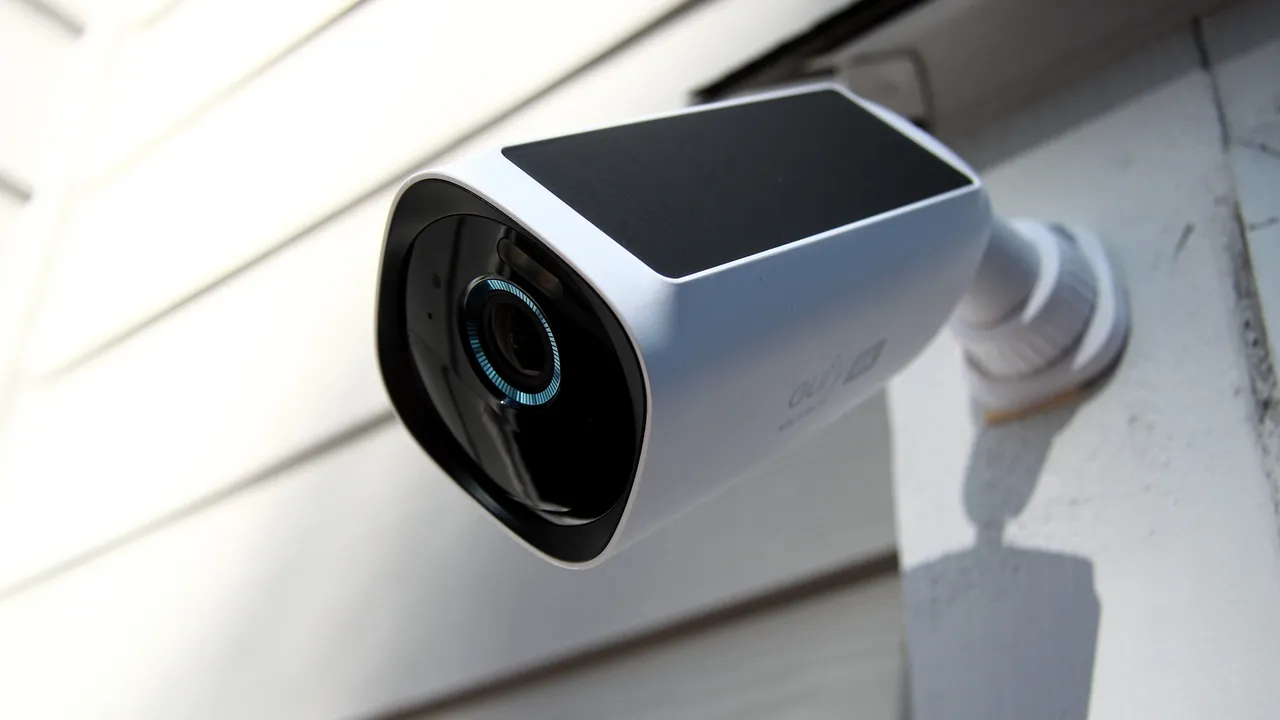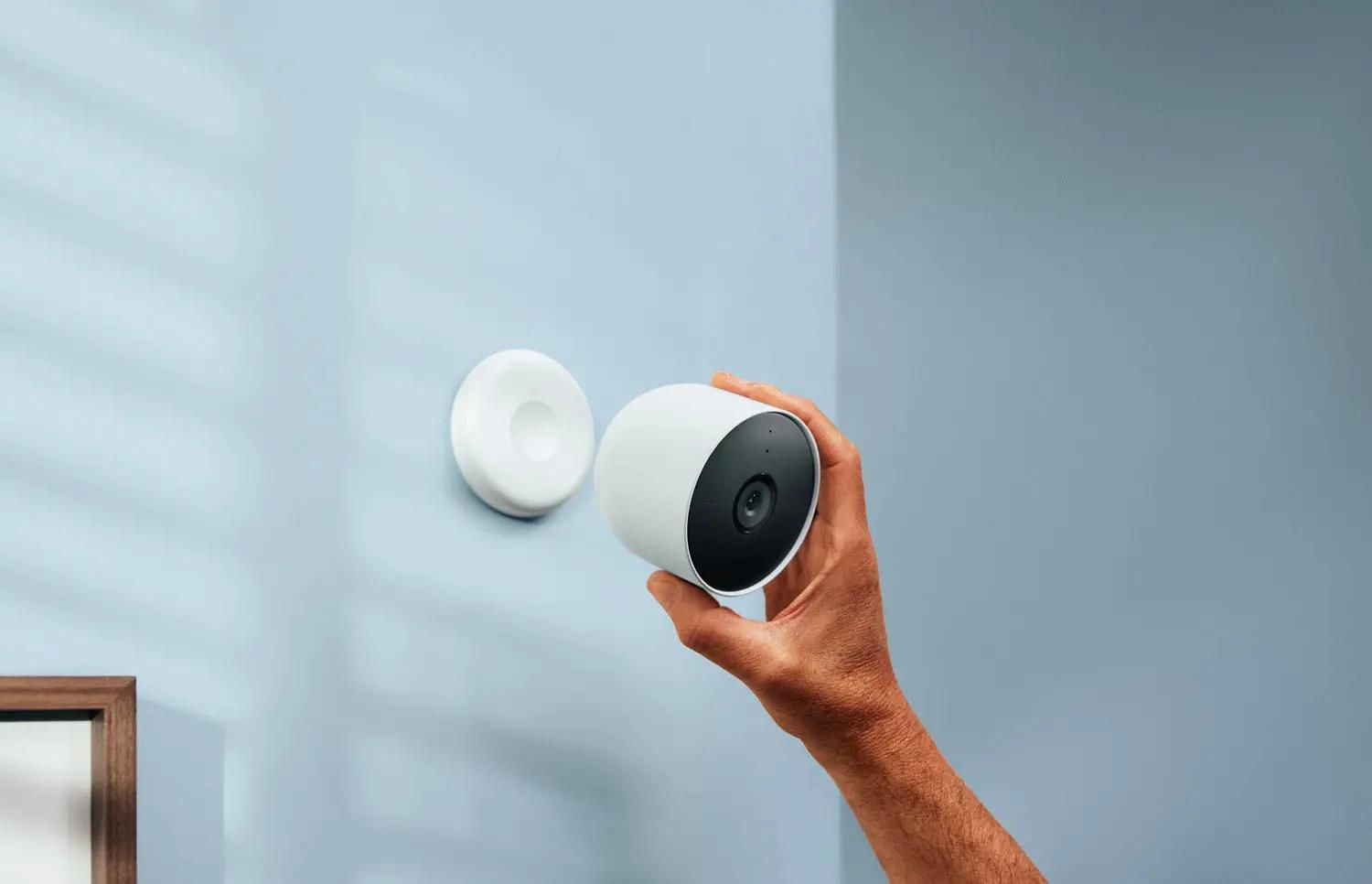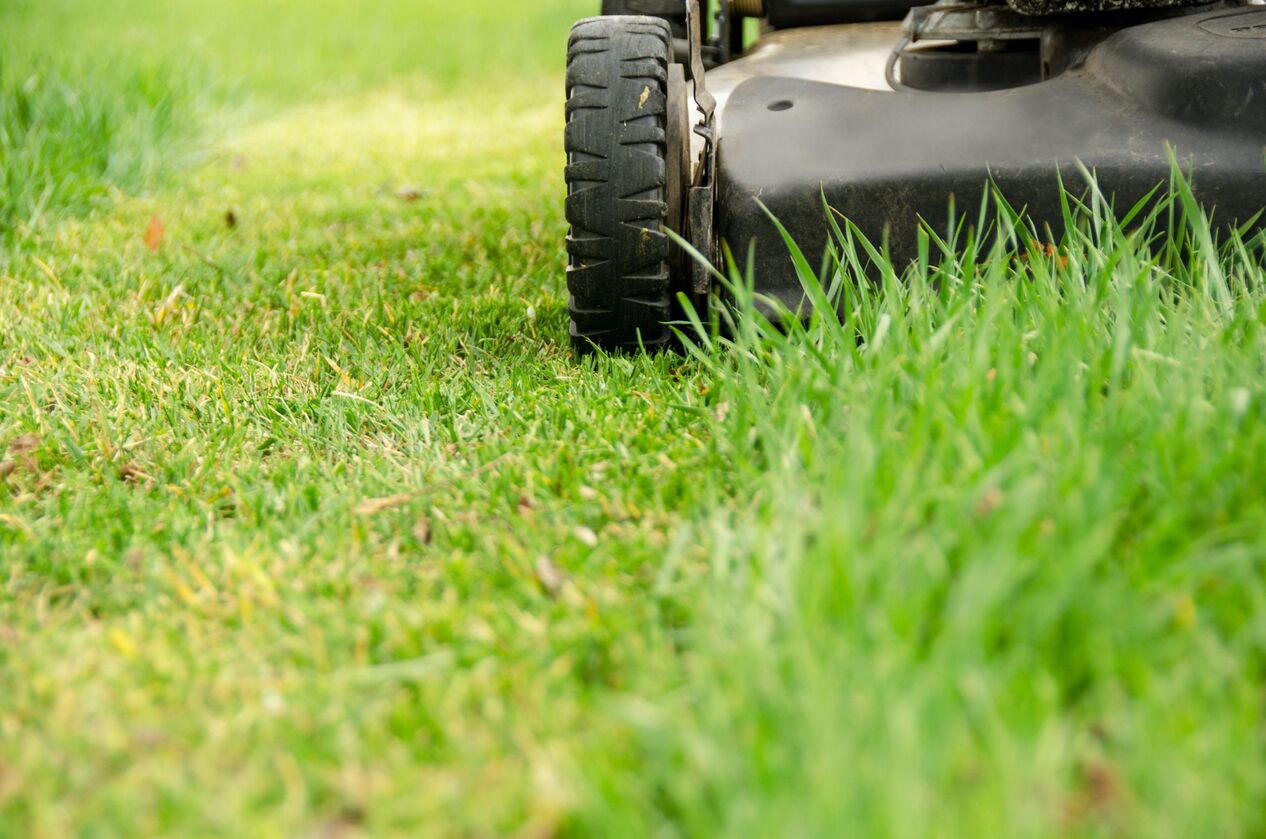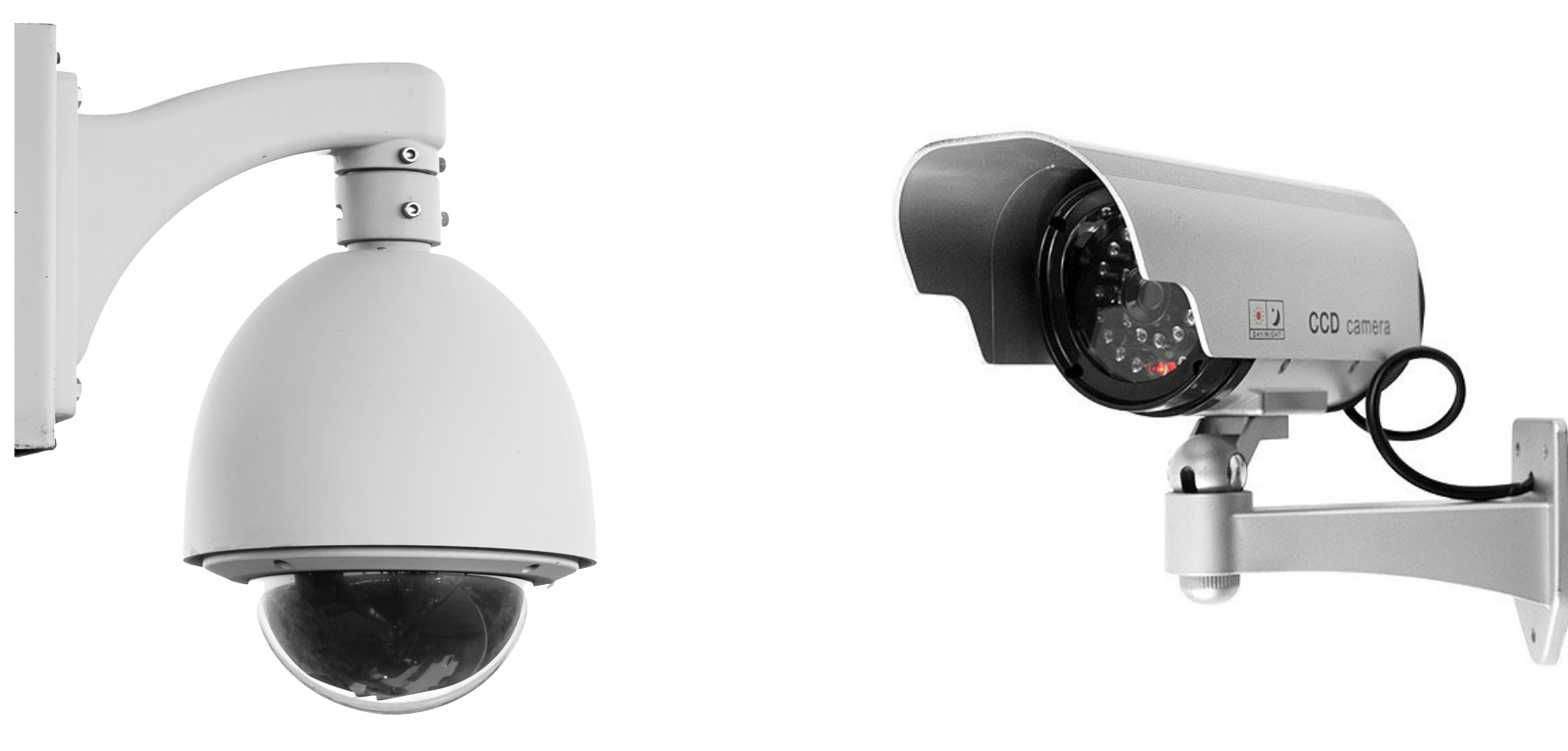Home>Home Security and Surveillance>Why Are Wasps Attracted To Security Cameras
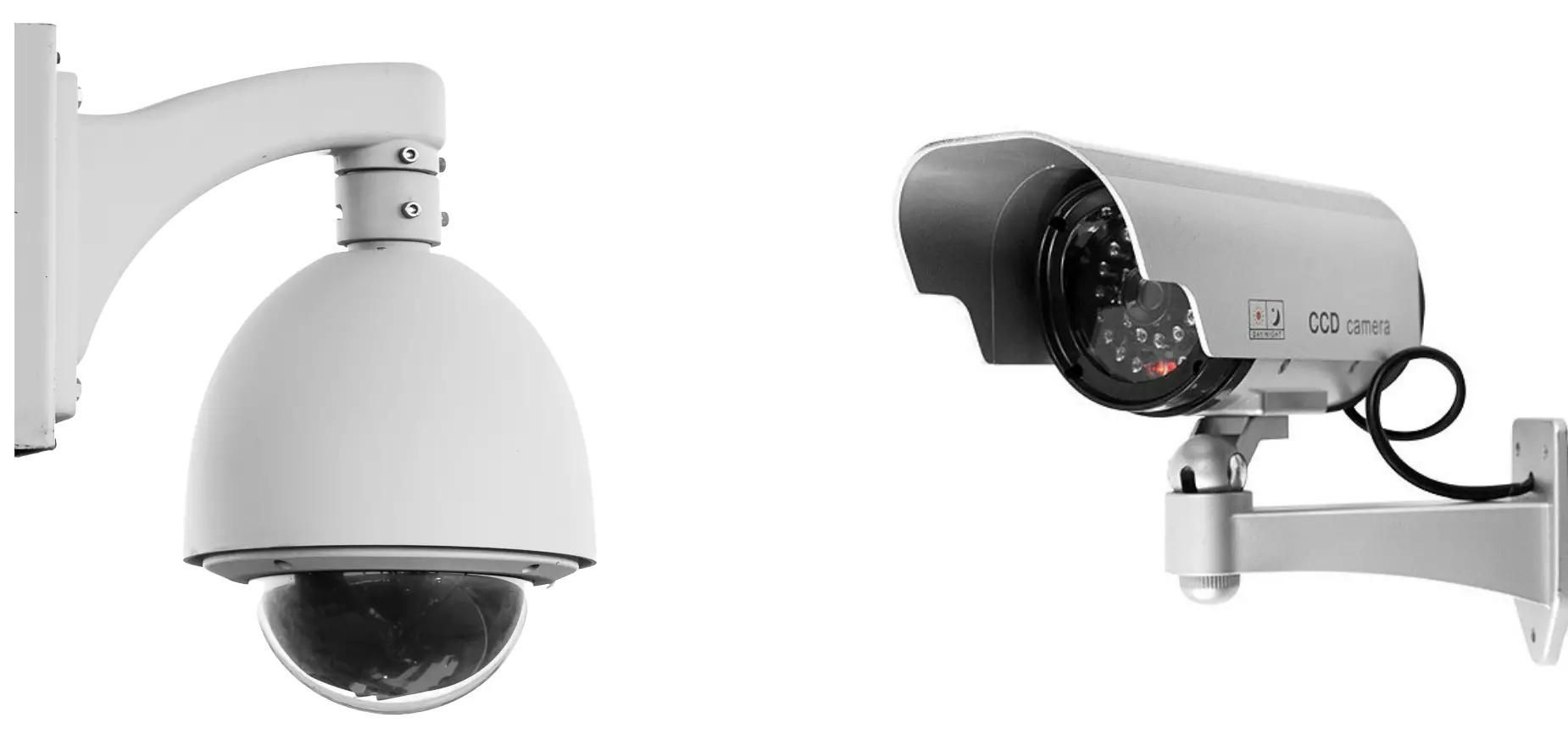

Home Security and Surveillance
Why Are Wasps Attracted To Security Cameras
Modified: March 6, 2024
Discover why home security and surveillance cameras attract wasps and learn effective strategies to keep them away from your property.
(Many of the links in this article redirect to a specific reviewed product. Your purchase of these products through affiliate links helps to generate commission for Storables.com, at no extra cost. Learn more)
Introduction
Home security systems and surveillance cameras have become essential tools in protecting our homes and loved ones. These high-tech devices offer peace of mind and enable us to monitor our properties from anywhere at any time. However, there is an intriguing phenomenon that many homeowners have experienced – the attraction of wasps to their security cameras.
It may seem odd that these buzzing insects would be drawn to something as seemingly non-threatening as a security camera. But the truth is, wasps have a natural curiosity and are attracted to certain factors that these devices possess. Understanding why wasps are attracted to security cameras is crucial in finding ways to prevent them from setting up nests in close proximity. Let’s delve deeper into this fascinating topic and explore some effective ways to keep wasps at bay.
Key Takeaways:
- Wasps are attracted to security cameras due to their color, warmth, and patterns, mimicking potential nesting spots. Homeowners can deter them by using light-colored cameras and repellents, and maintaining a clean environment.
- To prevent wasp infestations near security cameras, homeowners can use false nests, repellents, and light-colored cameras. Regular inspections and professional help can ensure a safe and functional surveillance system.
Read more: How To Keep Wasps Off My Security Camera
The Fascination with Security Cameras
Wasps are naturally curious creatures, constantly searching for new places to build their nests. They are attracted to structures that provide suitable shelter and offer protection from predators and inclement weather. This is why security cameras pique their interest.
Security cameras often have a unique design with multiple angles and protrusions. These features mimic the appearance of potential sheltered spots or nesting locations for wasps. The cameras also emit a low-frequency vibration, which can attract these insects. Moreover, the warmth generated by the camera’s electrical components is appealing to wasps seeking warmth and comfort.
From a wasp’s perspective, a security camera can appear as an ideal spot for a new home. However, this fascination with security cameras can be problematic for homeowners. Wasp nests near surveillance cameras can obstruct the camera’s field of view or interfere with its proper functioning. Additionally, the presence of wasps can be a safety concern, as their stings can cause severe allergic reactions in some individuals.
Understanding the factors that attract wasps to security cameras is the first step in effectively addressing this issue. By implementing preventive measures, homeowners can minimize the risk of wasp infestations and maintain the optimal functionality of their security systems.
Understanding Wasp Behavior
For homeowners dealing with wasp infestations, it’s essential to understand the behavior of these insects. Wasps are social creatures that live together in colonies. They build intricate nests using a papery substance made from wood fibers and saliva. Common species of wasps, such as yellowjackets and paper wasps, have a territorial nature and can become aggressive when their nests are disturbed.
Wasps have a keen sense of sight and are attracted to various stimuli in their environment. They are particularly drawn to bright colors, sweet smells, and patterns that resemble their natural surroundings. This is where security cameras come into play.
Security cameras often have housing that is black or dark in color, creating a contrast against lighter surroundings. From a wasp’s perspective, this contrasts mimics the markings on their nest or potential prey. As a result, wasps can mistake the camera housing for a suitable place to build their nest.
Furthermore, certain patterns on the camera, such as lines or dots, can also attract wasps. These patterns resemble the markings on their own nests, triggering their instinctual response to investigate and potentially build a nest in that location.
Understanding the visual cues that attract wasps to security cameras can help homeowners take proactive measures to deter these insects. By addressing the factors that draw wasps in the first place, homeowners can significantly reduce the likelihood of wasp infestations near their security systems.
Factors Attracting Wasps to Security Cameras
There are several key factors that make security cameras appealing to wasps. By understanding these factors, homeowners can take appropriate measures to minimize the attraction for these insects:
- Color and Contrast: Wasps are visually attracted to high-contrast colors, especially black and dark hues. The dark housing of security cameras can resemble the markings on their own nests or potential food sources, making them more attractive to wasps.
- Patterns and Shapes: Certain patterns or shapes on the camera housing, such as lines or dots, can also attract wasps. These patterns mimic the markings on their own nests, triggering their instinctual response to investigate and potentially build a nest in that location.
- Warmth: Security cameras emit a slight warmth due to their electrical components. Wasps are attracted to warmth, especially during cooler months or in shaded areas. This warmth can make the camera housing an appealing spot for them to nest.
- Vibration: Security cameras often emit low-frequency vibrations that are imperceptible to humans but can be detected by wasps. These vibrations can mimic the movement of potential prey or signal the presence of an ideal nesting site, attracting wasps to investigate further.
- Location: The placement of security cameras can also play a role in attracting wasps. Cameras that are mounted near potential nesting areas, such as eaves, overhangs, or shrubs, are more likely to invite wasp activity. Wasps prefer to build nests in sheltered locations, so proximity to potential nest sites increases the likelihood of infestation.
By understanding the factors that attract wasps to security cameras, homeowners can take appropriate action to minimize these attractions. Implementing preventive measures can help homeowners maintain the functionality of their security systems while keeping wasps at bay.
The Role of Colors and Patterns
Colors and patterns play a significant role in attracting wasps to security cameras. Wasps are highly visually-oriented insects and are drawn to specific visual cues. Understanding the role of colors and patterns can help homeowners take effective preventive measures against wasp infestations near their security systems.
Dark colors, especially black, tend to attract wasps. This is because the dark hues of security camera housings resemble the markings on wasp nests. For wasps, the camera housing can appear as a potential nesting spot or a sheltered area to build their colonies.
Additionally, high-contrast colors, such as black against a lighter background, are more likely to catch the attention of wasps. This contrast mimics the patterns and markings found on wasp nests in nature, further enticing these insects to investigate.
Patterns on security cameras can also play a role in attracting wasps. Wasps have a natural inclination to investigate and potentially build nests in areas with patterns resembling their own nests. Lines, dots, or other patterns on the camera housing can trigger a wasp’s instinctual response to explore the location.
To discourage wasp attraction, homeowners can consider repainting or covering the camera housing with colors that are less likely to attract wasps. Lighter shades or colors that blend with the surroundings can make the camera housing less appealing to these insects. Additionally, covering the camera housing with a solid-color cover or tape can eliminate any patterns that may attract wasps.
It’s important to note that while changing the color and patterns of the camera housing can help minimize wasp attraction, it’s not a foolproof solution. Other factors like warmth and location also play a role in attracting wasps. Therefore, it’s crucial to implement a comprehensive preventive approach that addresses multiple factors to effectively deter wasps from settling near security cameras.
To deter wasps from security cameras, try placing a few drops of peppermint oil around the camera. Wasps are repelled by the strong scent and are less likely to build nests.
Read more: Why Are Security Cameras Good
False Nests and Repellents as Prevention Methods
There are several preventive measures that homeowners can take to deter wasps from nesting near security cameras. Two effective methods are the use of false nests and repellents:
1. False Nests: Wasps are territorial creatures that prefer to establish their nests in areas without competition. By strategically placing false wasp nests near security cameras, homeowners can create the illusion that the area is already occupied. This can deter wasps from building nests in close proximity as they perceive it as a potential threat to their existing colonies. False nests can be easily crafted using paper bags or using commercially available fake wasp nest products.
2. Repellents: There are various repellents available in the market that can discourage wasps from approaching security cameras. Natural repellents, such as peppermint oil or clove oil, can be mixed with water and sprayed around the camera area to create a deterrent scent. Additionally, synthetic wasp repellents containing chemicals such as pyrethrin or permethrin can be applied according to the manufacturer’s instructions to repel wasps effectively. It’s important to note that repellents should be used with caution, following proper safety guidelines and taking into consideration any potential harm to pets or the environment.
When using false nests or repellents, it’s crucial to follow the instructions carefully and regularly check and maintain them. Over time, the effectiveness of these methods may diminish, especially if wasp populations are persistent or if new wasp colonies are established nearby.
Remember, preventive measures like false nests and repellents are just one part of a comprehensive approach to deterring wasps from security cameras. It’s essential to address other factors, such as colors, patterns, and location, to create an environment that is less attractive to these insects.
If wasp activity persists or becomes a significant issue, it’s recommended to seek the assistance of professional pest control services. These experts can employ specialized techniques and offer long-term solutions to ensure the security and functionality of your camera system while keeping wasps at bay.
Potential Risks and Damage Caused by Wasp Infestations
Wasp infestations near security cameras can pose various risks and cause damage to both the property and its occupants. Understanding these potential risks is essential for homeowners to take prompt action and prevent any undesirable consequences:
1. Stings and Allergic Reactions: Wasps are known for their painful stings, which can cause severe allergic reactions in some individuals. Their stings can result in intense pain, swelling, and, in rare cases, anaphylaxis, a severe and potentially life-threatening allergic reaction. The presence of wasps near security cameras increases the risk of stings, particularly if someone unknowingly disturbs their nest.
2. Interference with Camera Functionality: Wasp nests constructed near security cameras can obstruct the camera’s field of view or block its lens. This interference can compromise the effectiveness of the surveillance system and limit its ability to monitor and capture footage of potential security threats. Additionally, the buildup of wasp activity near the camera can trigger unnecessary motion detection alerts, leading to false alarms.
3. Nest Expansion and Structural Damage: Wasps are industrious insects and will continue to expand their nests if left undisturbed. As the wasp colony grows, so does the nest size. Over time, this can lead to structural damage, especially if the nest is built within the vicinity of the security camera. Wasps may create multiple entryways and chew through materials, causing weakened structures or compromising wiring and other components.
4. Negative Aesthetic Impact: Wasp nests near security cameras can have a negative visual impact on the aesthetics of a property. Unsightly nests can detract from the overall appeal, potentially affecting curb appeal and property value. Addressing wasp infestations promptly can help maintain the aesthetic integrity of the property.
5. Disruption of Outdoor Activities: Wasps can be a nuisance when they are present in large numbers. Their buzzing and aggressive behavior can disrupt outdoor activities and make it unpleasant to spend time in areas near infested security cameras. This can limit the enjoyment of outdoor spaces and impact the overall quality of life for homeowners and their families.
To prevent these potential risks and damage, it’s essential to take proactive measures to deter wasps from establishing nests near security cameras. By implementing preventive strategies and seeking professional help if needed, homeowners can maintain a safe and functional surveillance system without the risks associated with wasp infestations.
Tips for Mitigating Wasp Attraction to Security Cameras
Dealing with wasp attraction to security cameras can be challenging, but there are several effective strategies homeowners can implement to mitigate this issue. By taking proactive measures, you can discourage wasps from building nests near your cameras and ensure the optimal functionality of your security system. Here are some helpful tips:
- Select Light-Colored Cameras: Opt for security camera models that come in lighter colors, such as white or beige. Light-colored cameras are less likely to attract wasps as they don’t resemble the markings and patterns on their nests.
- Eliminate Dark Contrasts: If your existing cameras are dark-colored, consider wrapping or covering them with light-colored material or paint to reduce the contrast that attracts wasps.
- Keep Surroundings Clean: Regularly clean the area around your security cameras to remove any debris or food sources that may attract wasps. Fallen fruit, garbage, or open food containers can lure these insects, so maintaining a clean environment is crucial.
- Check for and Seal Entry Points: Inspect your home for any potential entry points where wasps can gain access. Seal gaps, cracks, and openings in walls, windows, and doors to prevent wasps from entering the premises and building nests near your security cameras.
- Use Wasp-Repelling Plants: Planting certain types of botanicals around your outdoor area can act as natural repellents for wasps. Mint, eucalyptus, and marigolds are known to deter these insects, so consider incorporating them into your landscaping near your security cameras.
- Maintain Regular Inspections: Regularly inspect your security cameras for any signs of wasp activity or nest building. Addressing early signs of wasp presence can prevent infestations and minimize any potential damage to your cameras.
- Consult with Pest Control Professionals: If you are dealing with persistent wasp infestations or if the problem poses a significant risk, it may be best to seek assistance from experienced pest control professionals. They can provide specialized guidance and offer effective solutions to keep wasps away from your security cameras.
Remember, taking a proactive approach is key in mitigating wasp attraction to security cameras. By employing these tips and combining various preventive measures, homeowners can create an environment that is less appealing to wasps and maintain the functionality and effectiveness of their security systems.
Conclusion
Dealing with wasp attraction to security cameras can be a perplexing challenge for homeowners. However, by understanding the factors that draw wasps to these devices and implementing preventive measures, you can minimize the risk of infestations and ensure the optimal functionality of your security system.
Wasps are attracted to security cameras due to factors such as color, contrast, warmth, patterns, and vibrations. These factors mimic the appearance of potential nesting spots or prey, making the cameras enticing to these curious insects. By being aware of these attractions, homeowners can take proactive steps to deter wasps.
Preventive strategies like using false nests and repellents, selecting light-colored cameras, keeping the surroundings clean, sealing entry points, and incorporating wasp-repelling plants can significantly reduce wasp activity near security cameras. Regular inspections and seeking the assistance of pest control professionals when necessary are also vital to maintaining a wasp-free environment.
Wasp infestations near security cameras can pose risks such as stings and allergic reactions, interference with camera functionality, structural damage, negative aesthetic impact, and disruptions to outdoor activities. By addressing wasp attraction promptly and effectively, homeowners can mitigate these risks and maintain a safe and functional surveillance system.
Remember, a comprehensive approach that considers various factors is crucial in minimizing wasp attraction to security cameras. By employing preventive measures and seeking professional help if needed, you can create a secure and wasp-free environment around your cameras, ensuring the safety of your property and loved ones.
Frequently Asked Questions about Why Are Wasps Attracted To Security Cameras
Was this page helpful?
At Storables.com, we guarantee accurate and reliable information. Our content, validated by Expert Board Contributors, is crafted following stringent Editorial Policies. We're committed to providing you with well-researched, expert-backed insights for all your informational needs.
